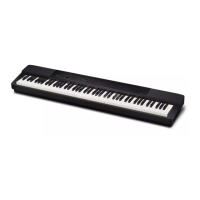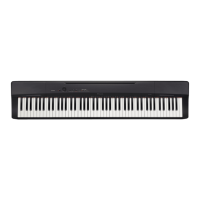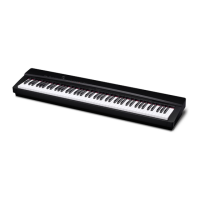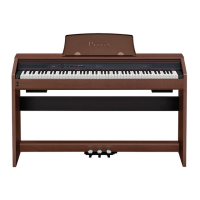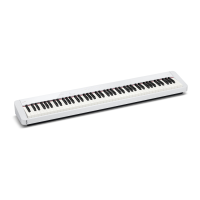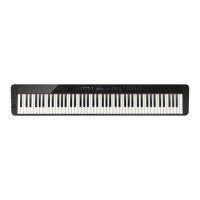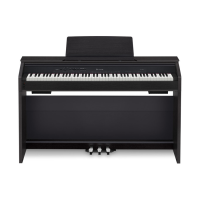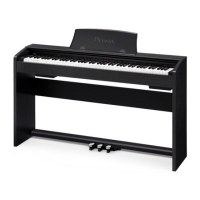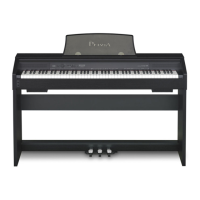When there are multiple parameters with the same ID inside the same category, as with the mixer
channel volume setting for example, the block number required to specify to which block data belongs is
specified as:kkkkkkkjjjjjjjiiiiiiiB (Binary). When the parameter block has a multi-dimensional
array structure, bit 21 of the block number is divided into prescribed bit fields based on the rules
explained below.
Block Bit Field Division
• Case 1
When an array has three or fewer nesting levels and the number of arrays in each dimension is 128
or less, they are assigned b elow the three 7-bit fields. Unused regions are filled with zeros.
Example:
parameter[A][B][C]
With a 3-dimensional array parameter that consists of A=8 (3 bits), B=5 (3 bits) and C=10 (4
bits), the blo ck bit fields are allocated as: Block = 0000aaa 000bbb ccccccc (Binary).
• Case 2
When Case 1 conditions are not satisfied, the minimal number of fields required for each number
of arrays is reserved from the lower bit of the blo ck. Unused regions are filled will zeros.
Example 1:
parameter[A][B][C][D]
With a 4-dimensional array parameter that consists of A=3 (2 bits), B=4 (2 bits), C=3 (2 bits)
and D=4 (2 bits) like the one shown above, the block bit fields are allocated as:Block = 0000000
00000a abbccdd (Binary).
Example 2:
parameter[A][B]
With an A=3 (2bit), B=200 (8bit) 2-dimensional array parameter, the block bit fields are allocated
as: Block = 0000000 000aab bbbbbbb (Binary).
15.3.10 prm : Parameter ID
Format: LSB 0pppppppB
MSB 0qqqqqqqB
The Parameter ID indicates the parameter type. (See V Parameter List .) When transferring indi-
vidual parameters individually (as opposed to bulk transfer), this field is used to identify the parameter
by its parameter ID.
15.3.11 idx : Data Index Number
Format: 0iiiiiiiB
The data index number indicates the first array number of the array where transfer starts.
15.3.12 len : Data Length
Format: 0lllllllB
33

